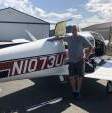Torque wrench length for gear overcenter check
-
Members Online
- Lax291
- RightrudderM20E
- 47U
- GeeBee
- 0TreeLemur
- bhtitle
- JB2000
- Boilermonkey
- Danb
- SilentT
- PeteMc
- philiplane
- 201er
- navysix
- StevenL757
- Tmooney
- Aviationist
- Bobaran
- Adverseyaw0317
- Marc_B
- Shadrach
- goodyFAB
- hubcap
- 00-Negative
- LANCECASPER
- EricJ
- mgtrevor
- tim417
- donkaye
- theoriginalturk
- MattD89
- Paul Thomas
- KLRDMD
- hammdo
- EJS
- Matthew P
- MDMooney
- cmorris
- jetdriven
- ArtVandelay
- amillet
- McMooney
- FlyboyKC


Recommended Posts
Join the conversation
You can post now and register later. If you have an account, sign in now to post with your account.